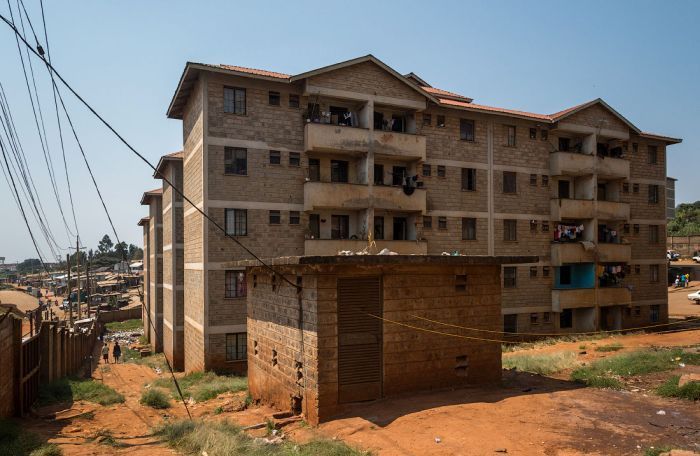|
|
Kibera Urban Slum, Nairobi, Kenya
|
Kibera originated as a settlement in the forests at the outskirts of Nairobi, when Nubian soldiers returning from service with the King's African Rifles (KAR) were allocated plots there in return for their efforts in 1904. Kibera was situated on the KAR military exercise grounds in close proximity to the KAR headquarters along Thika Road. The British colonial government allowed the settlement to grow informally. Furthermore, the Nubians had no claim on land in "Native Reserves". Over time, other tribes moved into the area to rent land from the Nubian landlords. With increase in railway traffic, Nairobi's economy developed, more rural African migrants moved to urban Nairobi in search of wage labor. Kibera and other slums developed throughout Nairobi.
Proposals were made in the late 1920s to demolish and relocate Kibera, as it was within the zone of European residential holdings; however, the residents objected to these proposals. The colonial government considered proposals to reorganize Kibera, and the Kenya Land Commission heard a number of cases which referred to the "Kibera problem". By then, Kibera was not the only slum. A 1931 Colonial Report noted the segregated nature of housing in Nairobi and other Kenyan towns, with housing for Europeans reported as good, and widespread prevalence of slum property for Africans and other non-European migrants.
• Post-independence
After Kenya became independent in 1963, a number of forms of housing were made illegal by the government. The new ruling affected Kibera on the basis of land tenure, rendering it an unauthorized settlement. Despite this, people continued to live there, and by the early 1970s landlords were renting out their properties in Kibera to significantly greater numbers of tenants than were permitted by law. The tenants, who are highly impoverished, cannot afford to rent legal housing, finding the rates offered in Kibera to be comparatively affordable. The number of residents in Kibera has increased accordingly despite its unauthorized nature. By 1974, members of the Kikuyu tribe predominated the population of Kibera, and had gained control over administrative positions, which were kept through political patronage.
|
|









